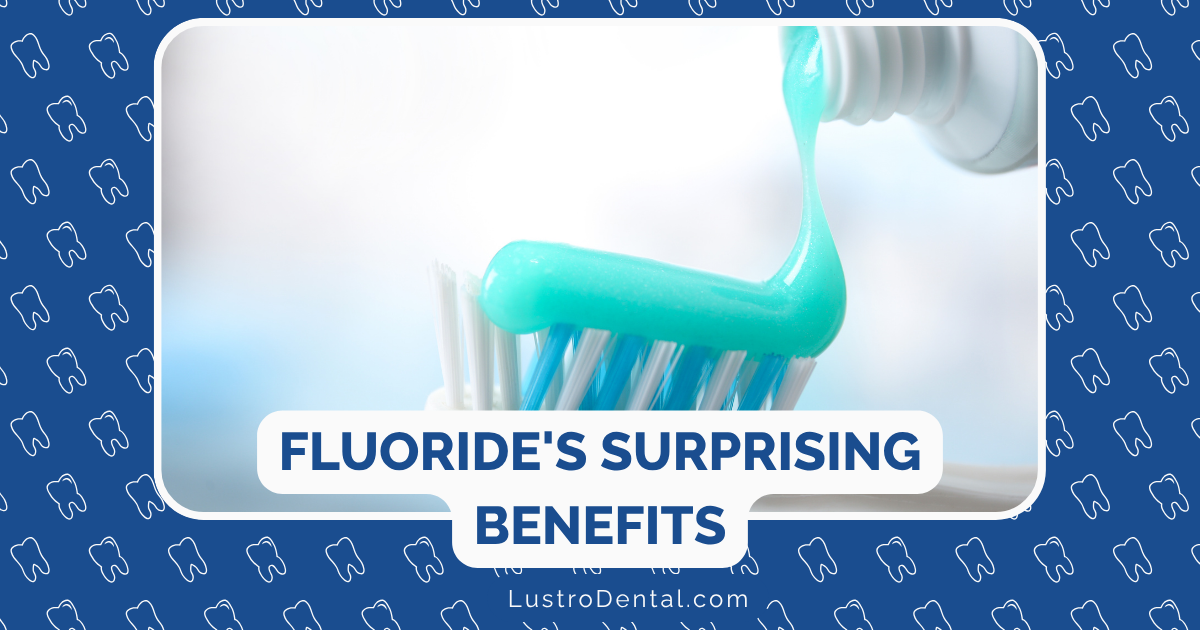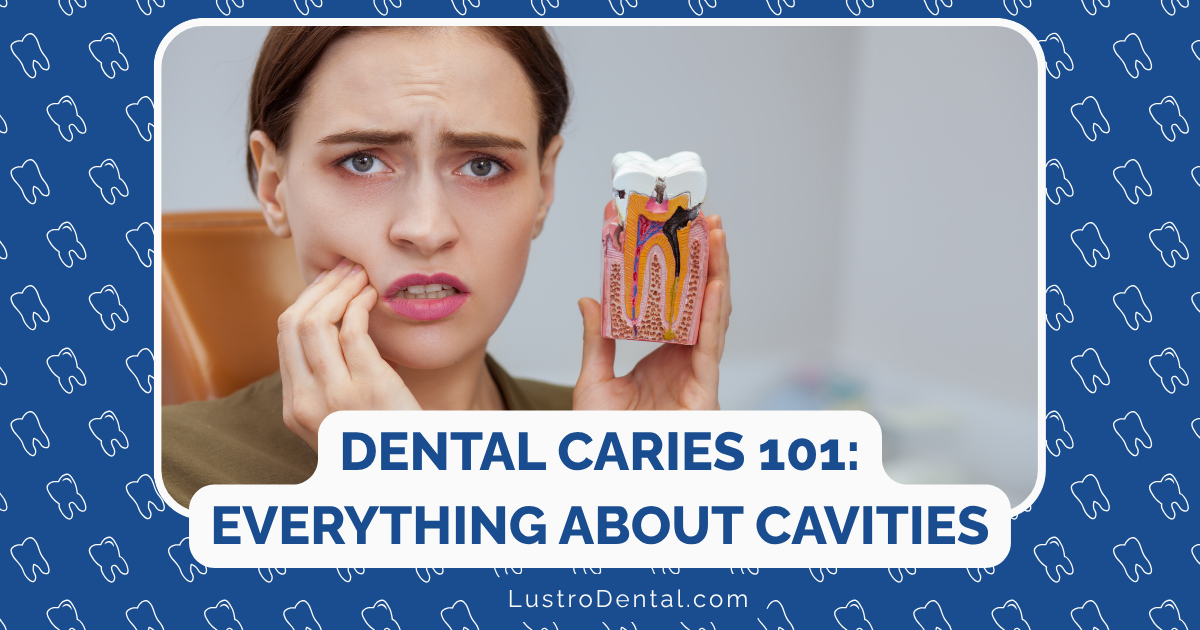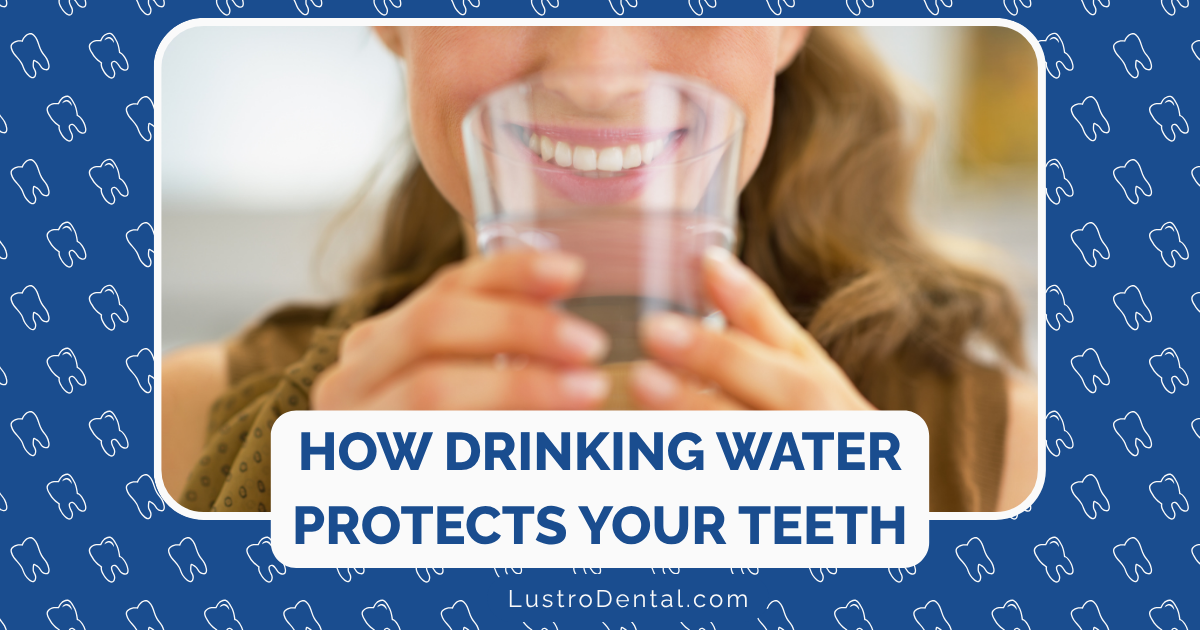The Surprising Benefits of Fluoride Beyond Cavity Prevention

When most people hear “fluoride,” they immediately think of cavity prevention. And for good reason—fluoride’s ability to strengthen tooth enamel and prevent dental decay has been well-documented for decades. But what many don’t realize is that this remarkable mineral offers a range of benefits that extend far beyond simply fighting cavities.
As a dental health advocate, I’ve seen firsthand how fluoride can transform oral health in ways that aren’t always obvious to patients. Let’s explore some of the lesser-known but equally important benefits of fluoride that might surprise you.
Beyond the Basics: Fluoride’s Multi-Faceted Role in Oral Health
Before diving into fluoride’s surprising benefits, let’s quickly review how it works at the most basic level. Fluoride is a naturally occurring mineral that helps strengthen tooth enamel by promoting remineralization—essentially helping rebuild weakened enamel before cavities can form.
According to the Centers for Disease Control and Prevention (CDC), community water fluoridation has been recognized as one of the ten greatest public health achievements of the 20th century. But fluoride’s benefits go well beyond what’s taught in basic dental education.
1. Powerful Antimicrobial Properties
One of fluoride’s lesser-discussed benefits is its ability to fight harmful bacteria in the mouth.
How Fluoride Battles Bacteria
Research published in PubMed shows that fluoride doesn’t just strengthen teeth—it actively works against the bacteria that cause decay by:
- Inhibiting bacterial enzymes essential for metabolism
- Disrupting acid production in plaque bacteria
- Interfering with bacterial adhesion to tooth surfaces
- Reducing the ability of bacteria to thrive in acidic environments
This antimicrobial action is particularly effective against Streptococcus mutans, the primary bacteria responsible for tooth decay. At concentrations as low as 0.1 mM, fluoride can completely halt glycolysis (the process bacteria use to produce energy) in these harmful microorganisms.
Plaque Reduction Benefits
The antimicrobial properties of fluoride translate to real-world benefits in plaque control. A clinical trial published in Science Direct found that stannous fluoride toothpaste significantly reduced plaque formation, with participants showing 15 times more plaque reduction compared to control groups after just one week.
This plaque-fighting ability is especially valuable because plaque doesn’t just cause cavities—it’s also the primary culprit behind gum disease, bad breath, and tooth discoloration.
2. Dentinal Hypersensitivity Relief
If you’ve ever winced when drinking something cold or hot, you’re familiar with tooth sensitivity. This common condition affects millions of people, and fluoride offers a solution that many don’t know about.
How Fluoride Reduces Sensitivity
Tooth sensitivity occurs when dentin (the layer beneath enamel) becomes exposed, allowing temperature and pressure changes to stimulate the nerves inside your teeth. Fluoride helps address this problem in several ways:
- Tubule Occlusion: According to research in Nature, stannous fluoride can reduce dentin permeability by up to 62% after seven days by physically blocking the microscopic tubules in dentin that lead to nerve endings.
- Remineralization: Fluoride promotes the deposition of minerals that help seal exposed dentin, creating a natural barrier against sensitivity triggers.
- Long-lasting Protection: A study published in PubMed found that stannous fluoride toothpaste improved sensitivity by 42% after eight weeks of use.
This sensitivity-reducing benefit is particularly valuable for people with receding gums, worn enamel, or those who have recently had dental procedures.
3. Enhanced Enamel Resistance to Acids
While it’s well known that fluoride strengthens enamel against decay, less discussed is how it fundamentally changes enamel’s response to acid exposure.
Creating Acid-Resistant Teeth
When fluoride is incorporated into tooth enamel, it creates fluorapatite—a modified version of the natural enamel mineral hydroxyapatite. This fluoride-enhanced enamel has some remarkable properties:
- Lower Dissolution Point: Fluorapatite begins to dissolve at a pH of about 4.5, compared to hydroxyapatite which starts dissolving at pH 5.5. This means fluoride-treated teeth can withstand significantly more acidic conditions before damage occurs.
- Faster Remineralization: Teeth with fluoride not only resist acid better but also recover faster from acid attacks. Research from Yale School of Public Health indicates that fluoride accelerates the remineralization process by attracting calcium and phosphate ions to damaged areas.
- Protection Against Erosion: Beyond decay, this acid resistance helps protect against dental erosion caused by acidic foods, drinks, and conditions like acid reflux.
For patients who consume acidic beverages like coffee, wine, or citrus juices, or those with conditions like GERD that expose teeth to stomach acid, this benefit can be particularly significant.
4. Potential Bone Health Benefits
Perhaps the most surprising benefit of fluoride extends beyond your mouth to your skeletal system. While research in this area shows mixed results, there’s evidence suggesting fluoride may play a role in bone health.
Fluoride and Bone Density
Fluoride has a strong affinity for calcified tissues, with approximately 99% of body fluoride bound to bones and teeth, according to research in PMC. This relationship with bone tissue has led to investigations of fluoride’s potential role in bone health:
- A study published in JAMA found that individuals living in areas with higher water fluoride levels (4-5.8 ppm) had significantly lower rates of osteoporosis compared to those in low-fluoride areas (0.15-0.3 ppm).
- Research from the National Institutes of Health indicates that fluoride can stimulate new bone formation, though its effects on bone mineral density and fracture risk show varied results.
It’s important to note that therapeutic doses used for potential bone benefits are much higher than those used for dental health, and high-dose fluoride therapy remains controversial. The current consensus is that fluoride at levels found in community water fluoridation (0.7 mg/L) is safe and may provide modest benefits to bone health without risks.
5. Reduced Need for Dental Interventions
One often-overlooked benefit of fluoride is its ability to reduce the need for invasive dental procedures by arresting early decay.
Reversing Early Decay
Fluoride has the remarkable ability to not just prevent cavities but actually reverse early decay in some cases:
- White Spot Lesions: These early signs of demineralization can often be reversed with fluoride treatments before they progress to cavities requiring fillings.
- Silver Diamine Fluoride (SDF): This powerful form of fluoride can actually arrest active decay in many cases. A study in MDPI found that SDF arrested caries in 86.7% of treated lesions, compared to just 13.3% with conventional fluoride varnish.
- Minimally Invasive Dentistry: By strengthening compromised enamel, fluoride enables more conservative treatment approaches, preserving natural tooth structure.
For patients with dental anxiety or limited access to care, this benefit can be particularly valuable, potentially saving them from more extensive and expensive treatments down the road.
6. Reduced Oral Health Disparities
One of fluoride’s most significant yet rarely discussed benefits is its role in reducing oral health disparities across socioeconomic groups.
Equalizing Access to Prevention
According to Johns Hopkins Public Health, community water fluoridation has been shown to reduce dental health disparities by providing universal access to this preventive measure regardless of income, education, or access to dental care.
- Studies show that when fluoridation is removed from community water supplies, decay rates increase most dramatically among lower-income populations.
- The cost-effectiveness of water fluoridation (about $1 per person annually) makes it one of the most equitable public health interventions available.
- By reducing the need for restorative care, fluoride helps those with limited access to dental services maintain better oral health.
This benefit extends beyond individual health to community well-being, making fluoride a powerful tool for public health.
7. Protection for Vulnerable Tooth Surfaces
As we age, our gums often recede, exposing root surfaces that aren’t protected by enamel. Fluoride offers special benefits for these vulnerable areas.
Root Caries Prevention
Root surfaces are covered with cementum, which is softer than enamel and more susceptible to decay. Fluoride provides crucial protection for these exposed surfaces:
- Lower Critical pH: Root surfaces begin to demineralize at a higher pH (about 6.7) compared to enamel (5.5), making them more vulnerable to acids. Fluoride helps counteract this vulnerability.
- Remineralization Support: According to Dimensions of Dental Hygiene, fluoride treatments like varnish and SDF are particularly effective at strengthening exposed root surfaces.
- Sensitivity Reduction: By occluding dentinal tubules in exposed roots, fluoride reduces the painful sensitivity that often accompanies gum recession.
For older adults or those with periodontal issues, this benefit can be particularly important in maintaining comfort and function as gums recede.
8. Enhanced Resistance to Secondary Decay
Another underappreciated benefit of fluoride is its ability to protect existing dental work from secondary decay—the development of new cavities around or beneath fillings, crowns, or other restorations.
Protecting Your Dental Investment
Secondary decay is one of the most common reasons for restoration failure. Fluoride helps extend the life of dental work by:
- Creating a more acid-resistant interface between the restoration and natural tooth structure
- Remineralizing microscopic gaps that may develop around restorations
- Inhibiting bacterial growth in these vulnerable areas
For patients who have invested in extensive dental work, regular fluoride treatments can help protect that investment and extend the lifespan of restorations.
How to Maximize Fluoride’s Full Range of Benefits
Now that you understand fluoride’s many benefits beyond cavity prevention, how can you ensure you’re getting the most from this versatile mineral?
Optimizing Your Fluoride Exposure
- Use fluoride toothpaste correctly: Brush for two full minutes twice daily, and don’t rinse immediately after brushing—this gives fluoride more time to work.
- Consider a prescription-strength fluoride product: If you have high decay risk, sensitivity, or exposed roots, ask your dentist about higher-concentration fluoride products for home use.
- Don’t skip professional fluoride treatments: These high-concentration applications provide benefits that over-the-counter products can’t match.
- Stay hydrated with fluoridated water: If your community has fluoridated water, drinking tap water throughout the day provides continuous low-level fluoride exposure.
- Consider specialized fluoride products: For specific concerns like sensitivity, look for products containing stannous fluoride, which offers enhanced benefits for reducing sensitivity and fighting bacteria.
Conclusion: Fluoride as a Comprehensive Oral Health Tool
Fluoride’s reputation as a cavity fighter is well-deserved, but its benefits extend far beyond this single function. From fighting harmful bacteria and reducing sensitivity to potentially supporting bone health and protecting vulnerable tooth surfaces, fluoride serves as a remarkably versatile tool in maintaining oral health.
Understanding these broader benefits helps explain why dental professionals are such strong advocates for fluoride use. It’s not just about preventing cavities—it’s about comprehensive oral health protection that contributes to overall wellbeing and quality of life.
The next time you use fluoride toothpaste, drink fluoridated water, or receive a professional fluoride treatment, remember that you’re doing much more than just preventing cavities—you’re taking advantage of one of dentistry’s most powerful and versatile tools for complete oral health.
Have you experienced any of these lesser-known benefits of fluoride? Share your experience in the comments below!







